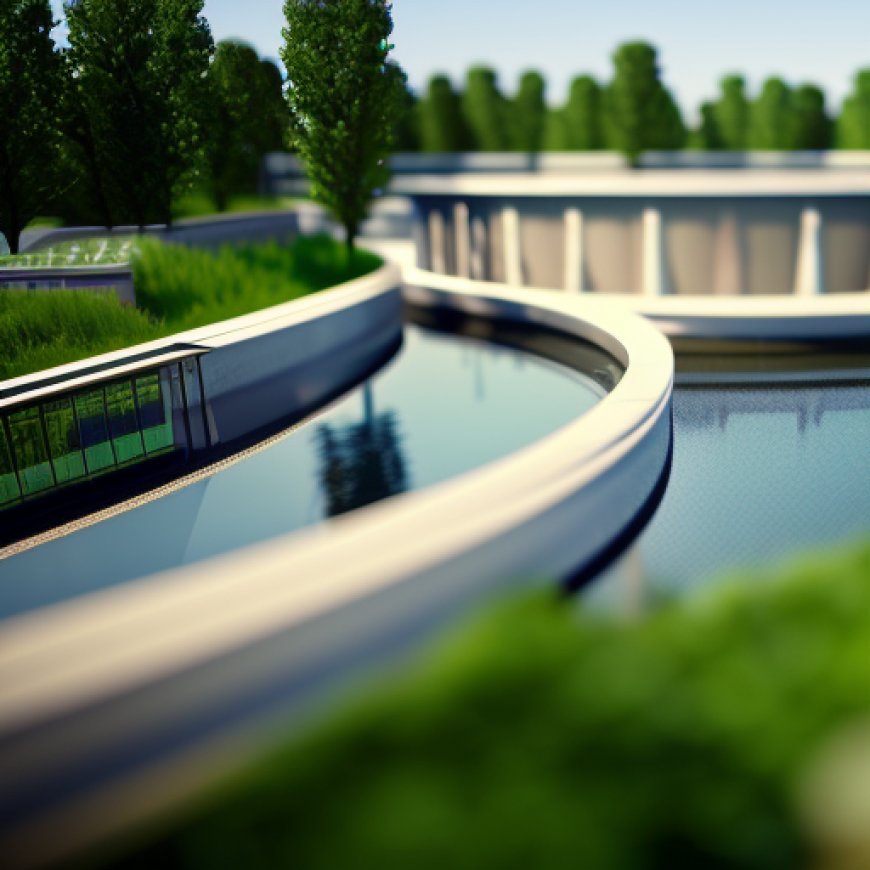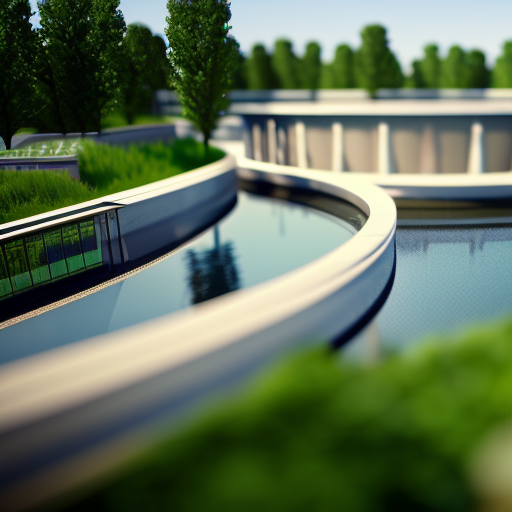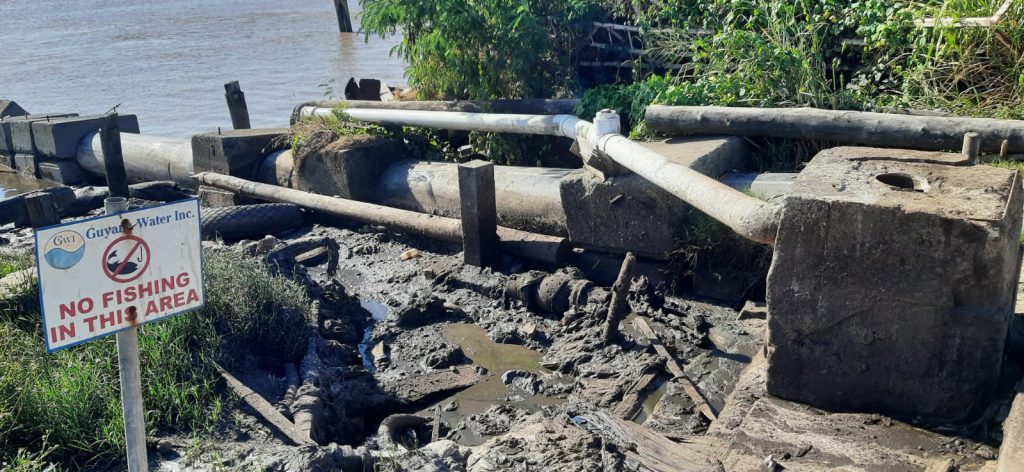Modern sewage treatment plant for Georgetown
Modern sewage treatment plant for Georgetown – Demerara Waves ... Demerara Waves Online News Guyana


Preparations Underway for Construction of Modern Waste Water Treatment Plant in Georgetown
Last Updated on Saturday, 22 July 2023, 17:30 by Denis Chabrol

The sewage discharge point at Mud Lot, Kingston, Georgetown on the east bank of the Demerara River.
Introduction
Preparations are underway for the construction of a modern waste water treatment plant for Georgetown, aiming to put an end to the dumping of this type of waste into the Demerara River and Atlantic sea. Minister of Housing and Water Collin Croal made this announcement on Saturday.
Details of the Project
The new waste water treatment plant, estimated to cost US$36 million, will have a capacity of 20 megaliters per day (MLD) and will collect sewage from areas up to Alexander Village and Kitty. Construction of the effluent treatment facility is expected to begin in 2025, according to a strategic plan.
Current Situation
Currently, sewage is being discharged by tankers into the Atlantic sea and into the Demerara River at a koker at Upper Water Street and at Mud Lot nearer the mouth of the same river.
Compliance with Sustainable Development Goals (SDGs)
The new effluent plant will enable Guyana to comply with the 1983 Convention for the Protection and Development of the Marine Environment of the Wider Caribbean Area (known as the Cartagena Convention) and the 1999 Land-Based Protocol. Minister Croal emphasized that the new waste water treatment plant will ensure that Guyana meets its commitment to its regional partners. Waste water treatment will be done in a clean manner, aligning with SDG 6: Clean Water and Sanitation.
Legal Obligations
Parties to the Protocol are obligated to establish legally binding effluent limitations for domestic sewage, and the convention requires participating countries to treat all domestic wastewater in their countries, so that effluent meets specified standards.
Conclusion
The construction of a modern waste water treatment plant in Georgetown is a significant step towards achieving sustainable development goals, particularly SDG 6: Clean Water and Sanitation. The new plant will not only address the issue of sewage dumping but also ensure compliance with international conventions and protocols for the protection of marine environments. With the construction expected to begin in 2025, Guyana is making progress towards a cleaner and healthier environment.
SDGs, Targets, and Indicators
-
SDG 6: Clean Water and Sanitation
- Target 6.3: By 2030, improve water quality by reducing pollution, eliminating dumping and minimizing release of hazardous chemicals and materials, halving the proportion of untreated wastewater and substantially increasing recycling and safe reuse globally.
- Indicator: Proportion of wastewater safely treated
-
SDG 14: Life Below Water
- Target 14.1: By 2025, prevent and significantly reduce marine pollution of all kinds, particularly from land-based activities, including marine debris and nutrient pollution.
- Indicator: Proportion of coastal and marine areas with pollution from land-based activities under control
Analysis
The issues highlighted in the article are related to the dumping of untreated wastewater into the Demerara River and Atlantic sea in Georgetown, Guyana. These issues are connected to SDG 6 (Clean Water and Sanitation) and SDG 14 (Life Below Water).
SDG 6: Clean Water and Sanitation
The construction of a modern wastewater treatment plant aims to improve water quality by reducing pollution and eliminating the dumping of untreated wastewater. This aligns with Target 6.3 of SDG 6, which aims to halve the proportion of untreated wastewater and substantially increase recycling and safe reuse globally. The article mentions that the new effluent treatment plant would have a capacity of 20 megaliters per day (MLD) and would collect sewage from up to Alexander Village and Kitty. This indicates progress towards the target of treating wastewater.
SDG 14: Life Below Water
The dumping of untreated wastewater into the Demerara River and Atlantic sea contributes to marine pollution. This is relevant to Target 14.1 of SDG 14, which aims to prevent and significantly reduce marine pollution from land-based activities. The article mentions that the new effluent treatment plant would bring an end to the dumping of wastewater into the Demerara River and Atlantic sea, indicating progress towards the target of reducing marine pollution.
The article also mentions the Cartagena Convention and the 1999 Land-Based Protocol, which require participating countries to treat all domestic wastewater in their countries to meet specified standards. These conventions and protocols serve as additional frameworks for addressing the issues related to wastewater treatment and marine pollution.
Table: SDGs, Targets, and Indicators
| SDGs | Targets | Indicators |
|---|---|---|
| SDG 6: Clean Water and Sanitation | Target 6.3: By 2030, improve water quality by reducing pollution, eliminating dumping and minimizing release of hazardous chemicals and materials, halving the proportion of untreated wastewater and substantially increasing recycling and safe reuse globally. | Proportion of wastewater safely treated |
| SDG 14: Life Below Water | Target 14.1: By 2025, prevent and significantly reduce marine pollution of all kinds, particularly from land-based activities, including marine debris and nutrient pollution. | Proportion of coastal and marine areas with pollution from land-based activities under control |
Behold! This splendid article springs forth from the wellspring of knowledge, shaped by a wondrous proprietary AI technology that delved into a vast ocean of data, illuminating the path towards the Sustainable Development Goals. Remember that all rights are reserved by SDG Investors LLC, empowering us to champion progress together.
Source: demerarawaves.com

Join us, as fellow seekers of change, on a transformative journey at https://sdgtalks.ai/welcome, where you can become a member and actively contribute to shaping a brighter future.







